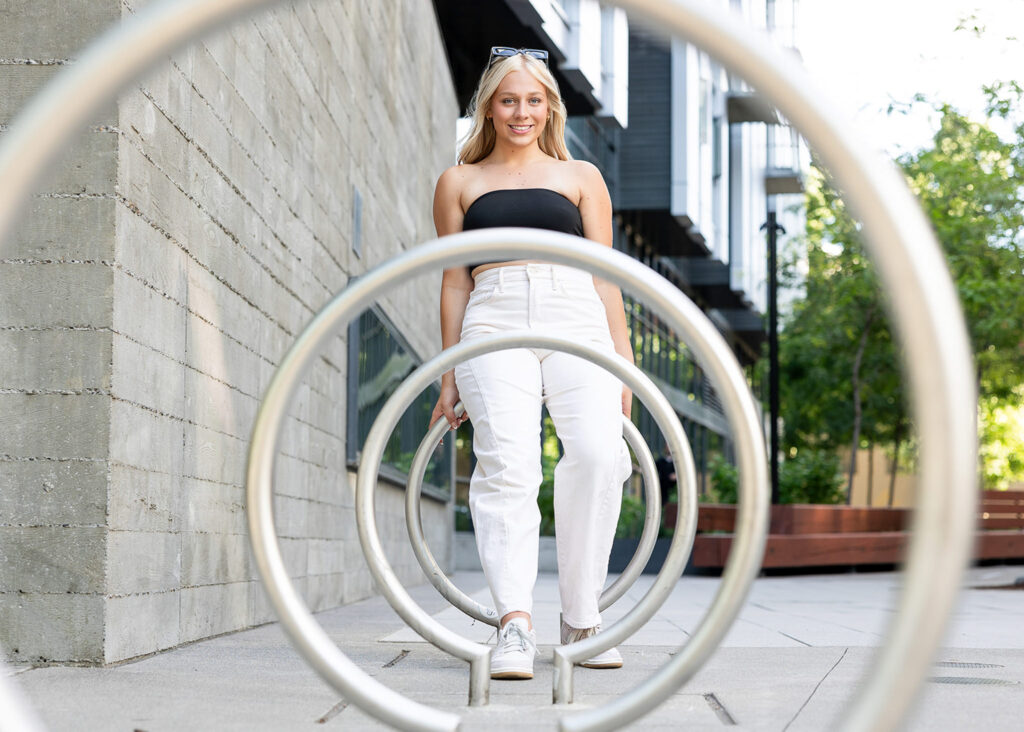Editing for Consistency: How to Develop a Signature Style That Stands Out
In the ever-evolving world of photography, your signature style is more than just a trend—it’s the distinct visual language that tells your unique story. Developing this signature style is about blending your creative instincts with technical precision to create images that resonate with both you and your audience. In this post, we’ll explore practical strategies for mastering in-camera settings, refining your presets, and leveraging color theory to build a cohesive aesthetic. Whether you’re just starting out or looking to elevate your craft, the journey to defining your signature style is an essential step in making your mark in a competitive field.
Hello, if you are new here, welcome! My name is Kellie. I’m a seasoned photographer turned mentor, and I’m passionate about taking the guesswork out of running a photography business. You’ve come to the right place if you’re just a year or two into your journey and looking for clear, practical guidance. You can inquire about my 1:1 mentoring here!
Defining Your Signature Aesthetic: Building Your Signature Style
Every photographer’s journey begins with the pursuit of a unique visual voice. For photographers in their first few years of business, honing your signature aesthetic is essential for standing out in a crowded market. This is where developing a true signature style comes into play.
Start by reflecting on what makes your work personal. Consider the themes, moods, and subjects that consistently draw your attention. Your signature style should be a natural extension of your creative instincts—a blend of your experiences, preferences, and technical skills. Experiment with different settings, lighting, and compositions to discover the visual elements that resonate with you and your audience.

Nailing Exposure & White Balance in-Camera
Getting the basics right in-camera is essential for developing a strong signature style. By mastering exposure and white balance, you set a solid foundation for all your editing decisions. Here are some key tips to consider:
Exposure Settings:
- Adjust aperture, shutter speed, and ISO to control light and depth of field.
- Use histogram tools to ensure balanced exposure.
White Balance Calibration:
- Use custom white balance settings or presets tailored to different lighting conditions.
- Check your camera’s display to confirm that colors appear natural before shooting.
Consistency Checks:
- Compare your settings across multiple shots to ensure uniformity.
- Practice in varied lighting to build a repertoire of white-balance settings that align with your style.

Choosing and Refining Your Presets
Your editing workflow is greatly enhanced when you choose and refine presets that reflect your unique signature style. Presets not only speed up your editing process but also ensure that your images have a consistent look that aligns with your personal brand. Here are some actionable tips and considerations:
Select Presets That Inspire You:
- Explore different presets to see which ones resonate with your vision of a signature style.
- Consider both free and paid options to build a versatile library.
Customize for Consistency:
- Tweak presets to match the specific mood and color palette you want.
- Adjust exposure, contrast, and saturation settings so that every image reflects your personal aesthetic.
Develop a Consistent Workflow:
- Use your refined presets as a starting point for batch editing.
- Regularly update and fine-tune your presets to maintain a fresh yet consistent style.
By carefully choosing and refining your presets you can streamline your editing process while ensuring that every photo you edit embodies your distinctive signature style.
Understanding Color Theory and Tone Curves: Enhancing Your Signature Style
Leveraging color theory and tone curves is vital in achieving a harmonious and cohesive signature style. By mastering these tools, you can ensure your images consistently convey the mood and personality that set your work apart. Consider these key points:
Fundamentals of Color Theory:
- Understand the color wheel, including complementary, analogous, and triadic schemes to inform your signature style.
- Experiment with contrasting and harmonious colors to evoke desired emotions.
Mastering Tone Curves:
- Use tone curves to fine-tune highlights, midtones, and shadows, ensuring each image reflects your signature style.
- Adjust contrast and brightness to create depth and consistency across your portfolio.
Integrating Color and Curves:
- Combine your knowledge of color theory with precise tone curve adjustments for a balanced final edit that aligns with your signature style.
- Regularly compare your edits to your intended aesthetic, making subtle tweaks to maintain a cohesive look.
These strategies not only enhance your editing precision but also reinforce your unique signature style across all your projects.

Batch Editing for Efficiency
Batch editing is a game-changer when it comes to working efficiently without sacrificing the unique look you’ve developed. Here’s how you can streamline your process:
Organize Your Workflow:
- Group images by similar lighting or color profiles to simplify the editing process.
- Create custom presets that reflect your personal aesthetic (including your signature style).
Utilize Software Tools:
- Use Lightroom’s batch processing or Photoshop’s actions to apply consistent edits across multiple photos.
- Experiment with settings until you find a balance that elevates your overall look.
Review and Refine:
- After applying batch edits, review each image to adjust any small discrepancies.
- Continuously fine-tune your process to ensure a professional and cohesive finish.
This approach not only saves time but also helps maintain the consistent visual appeal that sets your work apart.
Creating a Repeatable Workflow: Cementing Your Signature Style
A streamlined workflow is key to ensuring every edit remains consistent while saving you time. Establishing repeatable processes not only improves efficiency but also reinforces the unique look you’ve cultivated. Here’s how to set up an effective workflow:
Standardize Your Editing Steps:
- Outline each stage—from import to final export—to keep your process organized.
- Use templates and presets to maintain a consistent look that reflects your artistic vision.
Leverage Quality Tools:
- Choose software that supports automation, batch processing, and non-destructive editing.
- Regularly explore new features or plugins that simplify your process without compromising your core aesthetic.
Evaluate and Fine-Tune:
- Periodically review your workflow to identify any bottlenecks or redundant steps.
- Adjust or remove tasks that no longer add value, ensuring your process stays efficient and true to your style.
Document Your Process:
- Keep detailed notes or visual guides of your workflow for consistency and future reference.
- Sharing your documented process with peers can provide valuable feedback and fresh ideas.
By creating a repeatable workflow, you ensure that every photo benefits from a thoughtful and efficient process, ultimately reinforcing the quality and consistency of your signature style.

Final Thoughts: Perfecting Your Signature Style
In the journey of photography, consistency is key. By defining your aesthetic, nailing in-camera settings, refining your presets, leveraging color theory, streamlining your editing with batch processing, and establishing a repeatable workflow, you set the stage for a distinctive look. This approach isn’t just about following trends—it’s about expressing your unique perspective with clarity and confidence.
Don’t forget to check out my free scouting guide I have available! In the meantime, you can check out some of my other blog posts, follow along on Pinterest, or join in on the fun on Instagram!
If you want a mentor to uplevel your photography business please contact me here! I would love to provide guidance on all things photography business-related!
If you liked this blog, be sure to check out these posts: